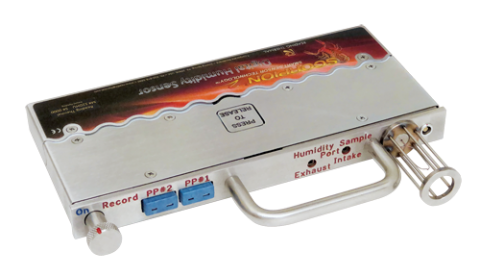Controlling internal food temperature in an industrial oven is easy when you take advantage of the SCORPION® 2 Profiling System and Data Logger from Reading Thermal. It will help you with measurement, capture, and storage of oven profile data, such as temperature, air velocity, heat flux and humidity.
Reading Thermal, a Reading Bakery Systems brand, has specialized in the commercial baking process for more than 25 years. The team developed and supports the SCORPION® 2 Profiling System and Data Logger, now an industry standard, that measures and maps essential baking parameters that affect the quality of your baked goods.
By connecting our different smart sensors and sensor arrays to the SCORPION® 2 Profiling System and passing them through the oven with your product, the measurement system can capture the four key baking parameters: 1) temperature [air, band and product core], 2) airflow [velocity], 3) energy transfer [heat flux], and 4) humidity.
Following data collection, the profiles are downloaded from the Data Logger to a PC for analysis with the proprietary SCORPION® Software.
Importance of Oven Temperature Measurement
Oven temperature causes physical and chemical reactions in dough/batter, and temperatures that are too low or too high during baking can lead to changes in fermentation and humidity levels and undesirable changes in surface coloring, texture and flavor.
If you produce bread, artisan bread, rolls, hamburger buns, cakes, biscuits, or other bread products, you understand that several stages of the process are temperature-dependent, such as oven-spring, drying/dehydration, and color formation.
Too much heat coming from one direction in the oven can cause the bottoms of the loaves to burn before the crusts brown properly. An oven that is too cool usually produces a heavy and unappealing loaf with a pale or soft crust.
Measuring and controlling internal food temperature is also key to achieving food safety. The Food Safety Modernization Act (FSMA) requires commercial bakeries to provide validation of process controls, or thermal kill steps, in an effort to reduce food borne pathogens, such as Salmonella spp, in ingredients and finished products.
Reading Thermal’s Innovative Solution
The Reading Thermal SCORPION® 2 Temperature Sensor Array is designed to measure temperature at product level, in fixed positions across the conveyor, and delivers a true representation of what your product is experiencing over time.
Different types of pluggable sensors are available, including one designed for solid or tight mesh conveyors and one for open mesh conveyors.
The sensor array is connected to the SCORPION® 2 Profiling System and Data Logger and travels through the oven with the product (with the oven under full load), producing an exact picture of temperature from side-to-side and end-to-end.
There are 2 types of pluggable temperature sensors. An Air/Conveyor sensor is designed for solid or tight mesh conveyors and measures air and band temperatures. An Air/Air sensor is meant for open mesh conveyors and is designed to measure upper air temperature immediately above the conveyor, and lower air temperature of the air rising through the conveyor.
Achieve maximum food quality and food safety compliance with oven temperature measurement by means of the SCORPION® 2 Temperature Sensor Array from Reading Thermal. Contact us online or call our headquarters in Sinking Spring, Pennsylvania at (610) 678-5890 Ext. 2 to learn more.

